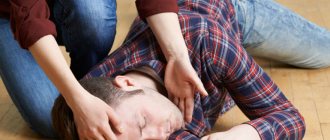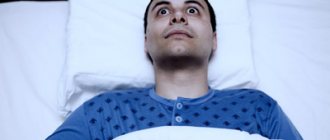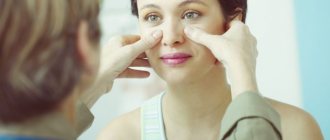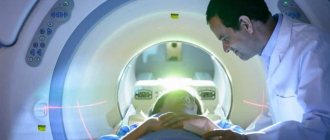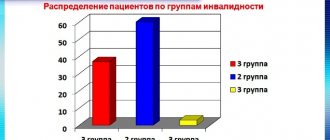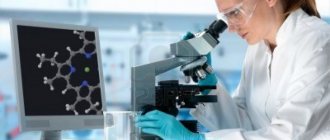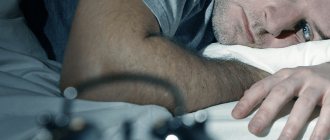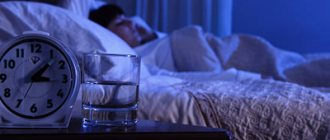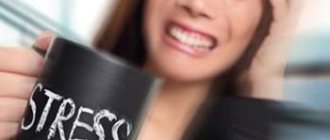The main method of treating epilepsy is drug therapy in combination with a proper lifestyle and diet. A diet for epilepsy is followed in order to maintain the effectiveness of medications, as well as to normalize the general condition of the patient.
The ketogenic diet is a diet that aims to produce increased amounts of ketone bodies in the body, which in turn are a treatment for epilepsy, since when they enter the brain, ketone bodies have an anticonvulsant effect.
The ketogenic diet, when strictly followed, has a positive result in 70% of cases. This type of nutrition is especially effective for children, despite the fact that it is most difficult for a child to adhere to this diet. However, despite its high effectiveness, such a diet should be formulated and monitored by a specialist in order to avoid negative effects on other internal organs and systems of the body.
A team of neurologists and nutritionists at the Yusupov Hospital works with patients on an individual approach, which allows them to provide attention to each individual based on the patient’s medical history and indicators. Our doctors have extensive experience in successfully treating epilepsy in adults thanks to the use of the latest techniques and medications in their medical practice.
Ketogenic diet menu for adults
The main principle of the ketogenic diet is the ratio of proteins and carbohydrates relative to fats - the balance should correspond to a value of 1 to 4, while the amount of protein consumed should be several times higher than the amount of carbohydrates.
A healthy person receives energy from carbohydrates - due to their oxidation, ATP (adenosine triphosphate) is released, which in turn is fuel for our body. If the amount of carbohydrates is reduced, the body begins to obtain energy from fat. The ketogenic diet involves restructuring the body to oxidize fats, which form ketone bodies in large quantities. Ketone bodies travel through the bloodstream to the brain, where they have an anticonvulsant effect. This diet is prescribed exclusively by a doctor for medicinal purposes, and is under no circumstances used for weight loss purposes, since an incorrectly prescribed diet can have serious consequences for some systems within the body.
During the diet, the regimen can be adjusted based on the patient’s personal indicators or wishes. The basis of such a diet should be an abundance of healthy fats, which are recommended to be obtained from the following foods:
- fatty sea fish;
- beef, lamb, pork;
- salo;
- butter and cream;
- vegetable oils - olive, coconut, flaxseed, sea buckthorn and sesame;
- seeds, nuts;
- avocado.
Effect on the body
The presence of caffeine in black tea or coffee directly affects the state of the nervous system. Therefore, for those whose nerve endings are vulnerable or are often subject to impulsive seizures, consuming caffeine even in minimal doses is not recommended.
However, each case is examined by a doctor, who determines the form and stage of epilepsy, the frequency of attacks and the state of the central nervous system (symptoms may differ in adults and children).
If epilepsy attacks occur frequently, then caffeine-containing drinks are contraindicated, because they provoke a convulsive state. If cases are rare, then drinks containing this substance are allowed, but in strictly limited quantities (the diet in this case is prescribed by a doctor).
It is important to take into account not only the composition of the drink, but also how it was prepared, what quality the raw materials were (leaves or grains), what kind of water was used, whether there were additional components, etc. All this affects the amount of caffeine inside.
People suffering from epileptic seizures need to monitor their condition, especially if they cannot give up tea or coffee. When seizures occur, the neural connections of the brain are destroyed.
Epilepsy can cause many diseases, such as memory disorders, migraines, weakened immunity, hormonal imbalances or problems with internal organs. To avoid worsening your health, you need to limit the amount of caffeine.
Coffee
Coffee is the most popular product that has an invigorating effect. However, differences in variety, composition, or preparation method may make it suitable or unsuitable for consumption by epilepsy patients.
Typically, the presence of caffeine in a drink is measured in coffee units (CU), indicating approximately 100 mg of the substance. Strong coffee, made from roasted beans and containing no other products or sweeteners, contains about 4 KU.
Coffee made from roasted beans contains more caffeine than so-called. “green”, made without roasting them. Green coffee has about 0.2 KU. Because consuming it daily during the day and morning, it is difficult to exceed the permissible dose, so it can be recommended to coffee lovers suffering from epilepsy, even with added sugar.
Instant coffee contains approximately the same amount of caffeine as green coffee, and it can also be a worthy replacement for whole grain coffee.
If it is not possible to drink coffee other than grain coffee, then it is necessary to strictly limit its consumption. You cannot take it every day, but you can take it 1-2 times a week.
In this case, it is worth diluting it with water (1:1), or with natural milk in a ratio of 1:2. This will make the drink fattier, which will reduce the risk of another seizure. You can add sugar only by diluting the drink with water in a ratio of 1:4.
Tea
Tea also contains a dose of caffeine, the amount of which depends on the color of the tea leaves, their size (large or small leaves), the strength of the drink, and the brewing method.
However, no tea (even the strongest) can compare with whole grain coffee in terms of caffeine content. Therefore, this drink can be drunk by most patients with epilepsy, provided that seizures occur rarely, otherwise its consumption will also have to be limited.
Black
Before using it, you should consult your doctor. If epileptic seizures occur frequently, then drinking it is not recommended or you should reduce the amount of consumption (no more than 5 cups per week).
The average value of coffee units is 50-70 KU, but the strength can be increased to 80-90 KU if you drink tea from the brewer without diluting it. You can get rid of the strength by adding water or natural milk (the latter is recommended for a ketogenic diet).
To reduce the dose of caffeine during the preparation stage, you can use tea bags. Because it often contains flavorings and leaves of other plants (with small amounts of natural stimulants) that help reduce its stimulant effects and sometimes have an additional calming effect by reducing blood pressure.
Green
This tea, due to the fact that the processing of its leaves differs from the black variety, is not recommended for epileptics, because it contains a large amount of caffeine, especially if the raw material was collected at the top of the plant, and not near the ground (where there are least psychostimulants).
Thanks to the minimal processing of green leaves, they contain more invigorating substances than black tea or even some types of coffee (up to 100 KE per 1 serving of strong drink).
Bagged small-leaf tea may contain fewer units, because often made from low quality leaves (growing near the ground) and has additives in the form of other plants that also have a calming effect: thyme, lemongrass, chamomile, sage, etc.
It is recommended to brew green tea in small portions and drink highly diluted.
Other
There are several varieties of tea that contain a minimal amount of substances that activate epilepsy, and patients can drink them in any quantity and using any brewing method:
- Fruit types are created for tea drinking in the summer, so the basis for their preparation is fruits, and they should be drunk chilled or slightly warm. When brewing, it is not recommended to use boiling water so as not to exceed the permissible caffeine level.
- Based on herbs - they are supposed to provide a calming effect, sometimes they are made for medicinal purposes (for example, as remedies for migraines or insomnia, which have a beneficial effect on the condition of the nerves).
Manufacturers try to achieve decaffeination in their production so that they contain as little theine as possible.
However, it is completely impossible to exclude it from the composition, so even the weakest brewed tea, which is positioned as non-alkaloid, still contains 0.1-0.3 KE per 100 g of drink (but this is too little to cause a seizure, so you can drink them before bed or to calm down).
Herbal infusions
Herbal decoctions can be used as a prophylaxis for epileptic seizures simultaneously with drug treatment, drunk as tinctures, or added to tea to reduce its strength.
Bases for herbal tinctures that help calm the nerves:
- valerian;
- angelica;
- forest peony;
- mistletoe;
- blooming Sally;
- chamomile;
- lilac.
They can be taken separately as medicines or used as a beneficial addition to tea. To prepare the tincture, you can pick, dry and grind the herbs yourself, or purchase ready-to-brew mixtures at the pharmacy.
Some infusions have a pungent odor and bitter taste, so you can take 1 tsp as a sweetener. honey, which will not increase the alkaloid content in the drink, but will make it sweeter.
The choice of beekeeping product should be taken carefully, because... it should be natural and without a large amount of glucose. The sugar level can be checked this way: if the honey does not thicken and become a sticky clot for several days, then it can be consumed by epileptics (a small portion).
Dangerous products for epilepsy
A diet for epilepsy in adults involves a complete abstinence from alcohol.
Beer, weak wines and other alcoholic drinks can not only provoke a seizure, but also aggravate the patient's condition. The most dangerous thing is drinking large quantities of alcohol in a short period of time. Seizures in epileptics most often occur due to drinking large quantities of liquid. Many neurologists recommend that patients reduce fluid intake and also prescribe medications to remove it from the body.
For people suffering from epilepsy, it is important to avoid overeating and also limit the consumption of simple sugars. A diet for epilepsy is aimed at reducing the load on the human body and preventing the development of seizures. You should limit your use as much as possible:
- refined sugar, honey;
- flour products (bread, rolls, cookies, pasta);
- various cereals;
- vegetables and fruits containing large amounts of starch (mainly root vegetables);
- alcohol;
- various sauces with a high percentage of carbohydrates.
Refusal of harmful products can not only reduce the likelihood of repeated epileptic attacks, but also improve the general condition of the patient.
It should be understood that even rare minimal violations of nutritional rules threaten the poor performance of the entire diet. It is important to turn this diet into a lifestyle. Nutritionists at the Yusupov Hospital try to make the ketogenic diet as suitable as possible for each patient. Our doctors closely monitor indicators and tests, adjust the patient’s diet if it becomes necessary.
Make an appointment
Computer and TV
In some people with epilepsy (approximately 5–15% of cases), seizures may be triggered by rhythmic flashing lights. This phenomenon is called photosensitivity (photosensitivity) and is detected during an EEG study, when the patient looks at a light bulb flashing at different frequencies.
Photosensitivity is 2.5 times more common in women than in men. It is in patients with photosensitivity that attacks can be provoked by watching TV, computer games, or color music at a disco. It is precisely patients with photosensitivity (but not all patients with epilepsy) who should limit or completely eliminate watching TV and working on the computer.
However, the source of light flickers can be not only televisions and computers, but also natural phenomena (bright reflections on the water, sparkling snow on a sunny day, alternation of light and shadow, etc.)
Even children with photosensitivity are not recommended to be completely deprived of watching TV, as this reduces the child’s quality of life and causes anxiety.
Rules that a child with epilepsy must follow when watching television:
- A child should not watch TV for more than 1–1.5 hours.
- The distance from the child to the TV should be as large as the room allows (but less than 2 meters).
- Additional room lighting is required to reduce light contrast.
- Preference is given to TVs with smaller screen sizes.
- The TV must be color with a slightly adjusted contrast and a high scanning frequency (100 Hz).
- To control the TV you need to use the remote control.
- To reduce the flickering effect when viewing flickering pictures, flashes, kaleidoscopic filming, you need to close one eye.
- You should not watch TV if your child has not gotten enough sleep, is tired or does not feel well enough.
Working on a computer is also a possible trigger for seizures in people with photosensitivity epilepsy, however, completely abandoning the computer at this time will cause a number of adverse psychological and social consequences due to the fact that:
- Computer skills are needed when applying for jobs in various fields.
- In cases where working at home is preferable (for example, in patients with concomitant motor disorders), a computer is an opportunity for professional implementation for people of many professions (creative professions, translators, specialists in the field of information technology, etc.). The ability to work on a computer may determine the choice of profession for many patients with other disabilities.
- There are many developmental and educational computer programs for children that will allow them to more effectively master educational material; The use of computer programs can be especially useful for homeschooled children.
- The computer significantly expands communication opportunities for both children and adults with epilepsy.
Thus, depriving a sick person of a computer can mean not only restrictions on opportunities for recreation and entertainment, but also restrictions on social activity, opportunities for creative and professional realization and learning. In order not to deprive the patient of the ability to work on a computer, a number of rules must be followed.
Rules that a child with epilepsy must follow while working or playing on the computer:
- The duration of work/play on the computer should not exceed 1–1.5 hours with a mandatory break every 30 minutes for 10–15 minutes, which are necessary to rest the eyes.
- The distance from the child to the monitor is 70 cm (the outstretched arm of an adult with outstretched fingers); The distance from the eyes to the monitor should be at least 35 cm for 14-inch screens.
- Additional room lighting is required to reduce light contrast.
- The monitor should not be exposed to glare from windows or other light sources.
- It is preferable to choose a liquid crystal monitor or one with high resolution; give preference to the SVGA standard with a scanning frequency of at least 60 Hz.
- The monitor screen should be clean and the picture settings should be adjusted correctly.
- You cannot view small details in an image at close range.
- It is necessary to remove other monitors and televisions from view.
- You should not work/play on the computer if the child has not gotten enough sleep, is tired or feels unwell.
The recommendations listed are suitable for both children and adults with epilepsy, and will also be useful for healthy people.
Ketogenic diet menu for adults
The diet of a person with epilepsy should be as balanced as possible.
Patients should eat large quantities of food with coarse fibers, as well as with a high content of folic acid, since epileptics often have a severe deficiency of this element due to prolonged use of medications. As a rule, the ketogenic diet is not prescribed to all patients, but only to those who do not have a positive reaction to the use of antiepileptic drugs. This diet is most effective in childhood. However, despite the high effectiveness of this diet, it has a number of contraindications:
- cerebrovascular pathologies;
- encephalopathy;
- kidney and liver diseases;
- diseases of the endocrine system (or predisposition to them);
- mitochondrial pathologies;
- diseases of the cardiovascular system.
It is most effective to follow this diet in a hospital setting.
The Yusupov Hospital provides its patients with a complete diet in the hospital, based on the testimony of the attending doctor. Since the diet is quite difficult to follow, within the hospital walls we provide maximum comfort to our patients so that they do not feel discomfort from a change of environment. The diet itself begins with a three-day fast. During this time, metabolism accelerates and the body is rebuilt, completely cleansing itself and preparing for a new diet. In the first three days, the patient is allowed to drink only clean water without gas. After which, under the strict supervision of a doctor, the required amount of fats and proteins begins to be introduced into the diet. The menu for each patient is compiled individually to eliminate the risk of complications. A sample menu on a ketogenic diet looks like this:
- first meal (breakfast) - scrambled eggs with ham or bacon, salad of non-starchy vegetables, dressed with olive oil;
- second meal (lunch) - stewed or fried pork or beef, steamed vegetables;
- third meal (dinner) - fatty sea fish (salmon, mackerel, herring), fresh vegetables and hard cheese.
The duration of this diet is regulated by the doctor. It takes at least 3-4 weeks to get results. If the diet gives a positive result, it is recommended to stick to this diet for the rest of your life.
Ketogenic diet for children
For children, the ketogenic diet is indicated only after one year in order to avoid developmental delays and serious complications of internal biorhythms.
For normal development, children must eat all trace elements and vitamins in sufficient quantities. The ketogenic diet involves a significant reduction in carbohydrates, which can inhibit a child’s growth. Therefore, the child must additionally consume vitamin complexes. The ketogenic diet for children will be approximately the same as for adults. However, children are also prescribed special fatty milk drinks, which “accustom” the child’s body to consuming large amounts of fat. The milk drink can be consumed in the form of a shake or ice cream.
The ketogenic diet in children requires constant monitoring. Children who adhere to this diet may experience delayed physical development and loss of body weight. Regular visits to the doctor and dietary adjustments will help prevent the deterioration of the little patient’s condition.
Treatment of epilepsy in Moscow
Epilepsy is not a death sentence, but a disease that, with proper treatment, allows a person to live a full life without any deprivation. To maintain a good quality of life, patients with epilepsy are strongly recommended to regularly visit a neurologist and undergo all necessary examinations.
At the Yusupov Hospital, treatment of epilepsy is performed by experienced neurologists and epileptologists who are fluent in various effective methods for eliminating this pathology. Professional nutritionists, based on the recommendations of the attending physician, create a nutrition plan that will be as safe as possible for the patient. The course of treatment for epilepsy at the Yusupov Hospital can significantly reduce the manifestations of the disease and achieve stable remission.
You can make an appointment with neurologists, epileptologists, nutritionists, undergo an examination, and get more information by calling the Yusupov Hospital.
Make an appointment
Institute of Child Neurology and Epilepsy
The insidiousness of epilepsy largely lies in the fact that each new attack facilitates the onset of the next one. Seizures are like stairs leading down. This is why doctors work so hard to control seizures. However, in addition to specific treatment, a number of simple measures have been developed to preserve such difficult-to-obtain health. Firstly, you must try to avoid provoking factors if they are identified for the child. In most cases this is:
- sleep-wake rhythm disturbances, lack of sleep, severe fatigue, psycho-emotional stress.
- alcohol in any, even the most “harmless” doses.
- rhythmic flashing of light (for photosensitivity forms of epilepsy), sharp sound and some other specific stimuli.
- any action that leads to a change in the level of oxygen saturation in the blood: frequent deep breathing, holding your breath (for example, when diving under water), excessive and sudden physical activity.
Secondly, try to build the child’s life stereotype in such a way as to minimize possible damage from an attack that has already begun.
In this regard, the organization of a healthy regime and a calm home environment play an important role. Gymnastics and physical education classes are useful, but without elements of competition. Children, and especially teenagers, should avoid going to bed late or waking up unusually early. This is especially important for attacks that occur early in the morning, when patients are waking up. Prolonged exposure to the sun should be avoided; Do not allow the patient to swim alone. Do not be near moving machinery, near fire, or at heights. Reduce the time spent watching TV shows and computer games (they should be completely excluded in case of photosensitive epilepsy). Electrical and thermal physiotherapy procedures (such as UHF) are prohibited. There are no special dietary restrictions. Avoid drinking alcohol and smoking. School activities and assignments must be completed in full.
Remember that unreasonable restrictions can negatively affect the development of a child as an individual and contribute to the formation of an “inferiority complex” in him. A child should not feel sick and isolated from society. We advise you not to turn to “witch doctors”, “healers” and homeopaths for this disease. In all civilized countries of the world, the only treatment is careful individual selection of antiepileptic drugs.
